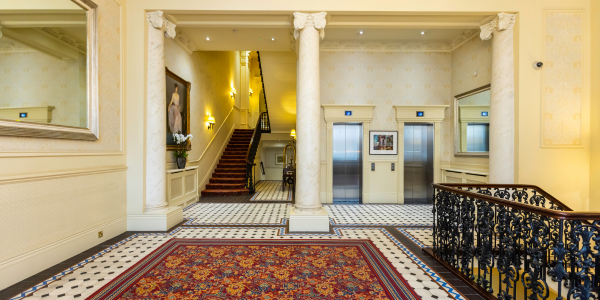BMS and IoT are natural partners. Building systems are increasingly connected to a central network that can be controlled centrally or from hubs – whether on or offsite. While there is much potential in this innovation of a hybrid BMS/ IoT system, there are also some concerns worthy of exploration.
What is the Internet of Things?
The Internet of Things (IoT) is a generic term for the connection of devices to the internet, where the devices can share data with each other. At its most basic, it is the connection of your laptops and smartphones to your Wi-Fi. However, in building management systems, the devices attached to a network can number in the hundreds. In fact, the number of existing and potential IoT devices is massive. From smart speakers to thermostats and more, there could be thousands of tools that could be interconnected for your convenience and pleasure in the future.
The pros and cons of a hybrid BMS/ IoT design architecture
Smart buildings sound, well, smart. On the surface, using IoT to streamline the functionality within a facility sounds like a logical progression in how we use our phones and laptops. Indeed, the smart building is the fastest-growing sector within the Internet of Things. In many ways, it is nothing less than a revolution. The drivers are simple: the requirement for energy conservation and the need to manage the carbon footprint of commercial facilities.
The trend is towards moving controls to the IP level, which will enable faster connectivity for the whole of the BMS. By their nature, any IoT device, such as the lighting system, the fire system, the security access controls, etc., can all be connected to this IP level network.
However, to do this properly, you will need expert help to set up the right protocols, connectivity and design the network, using a series of hubs. Here we face the first consequence of the hybrid IoT/BMS design architecture. You will need a significant level of expertise to create this connectivity.
You also need to question the security of the IoT. How secure will your facilities be when everything is networked to the internet? For these devices to be totally secure you will need to manage each one separately. You will need to check and install software updates regularly, and soon this can become a full-time job. The more devices you attach, the more management will be required.
In short, all too often, people blindly adopt IoT without considering these security and workload considerations.
What does this mean for BMS design?
As ever, the approach to building design needs to be intelligent rather than smart. You need an expert who understands your needs and then has a breadth of knowledge of the sector to choose the components to achieve your goals. A BMS designer will know what devices will remain secure and which will demand additional work into the future. While it might not be appropriate at this moment for your building to be equipped with full IP connectivity, the best building design professional will make choices that are future proof.
At Cube Controls, we offer full consultation on the design of your building systems. We can bring our specialist knowledge of BMS to create an intelligent building for your company.




